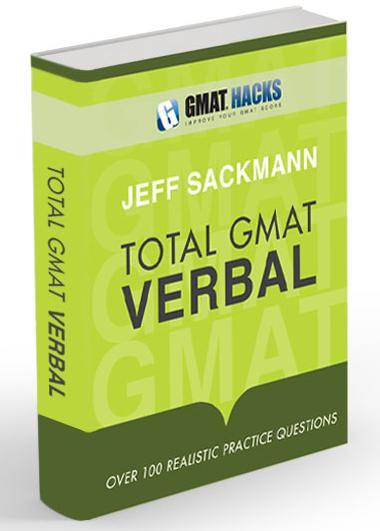
Bookshelf
|
|
Total GMAT Math Jeff's complete Quant guide, on sale now! |
|
|
Total GMAT Verbal Everything you need to ace GMAT Verbal! |
1,800 Practice Math Questions
Buy Jeff's books at Amazon.com

GMAT Official Guide, with IR
OG Math | OG Verbal
OG12 & Quant Rev solutions!
GMAT Question of the Day
Beginner's Guide to the GMAT
GMAT Hacks Affiliate Program

Recent Hacks

Categories
- General Study Tips
- Goals and Planning
- CAT Strategy
- The Mental Game
- GMAT Math Strategy
- GMAT Math Topics
- Mental Math
- Data Sufficiency
- Critical Reasoning
- Reading Comprehension
- Sentence Correction
- Analytical Writing Assessment
- Integrated Reasoning
- IR Explained
- Business School Admissions
- GMAT Prep Resources
- Practice Questions
- Total GMAT Math
- Total GMAT Verbal
- GMAT 111

GMAT Punctuation: The Semi-Colon
October 6, 2010
| You should follow me on Twitter. While you're at it, take a moment to subscribe to GMAT Hacks via RSS or Email. |
GMAT Sentence Correction questions do not explicitly test punctuation. However, a thorough knowledge of proper English punctuation can boost your GMAT score.
A correct answer choice will never have improper punctuation. You can always arrive at the right answer without knowing the punctuation rules, but what if you're unsure about an idiom that the question uses? In that case, familiarity with punctuation rules can be a lifesaver.
A semi-colon--the symbol ";"--is used for two main purposes. Most commonly, it is to separate two related clauses. Less often, it separates items in certain types of lists.
Semi-Colons Separating Clauses
Here's an example of proper semi-colon usage:
- The novelist's new book is set in the present; his previous work is best characterized as historical fiction.
The semi-colon separates the sentence into two parts. The key point here is that both parts would be complete sentences on their own.
From the writer's perspective, a semi-colon is a useful way to indicate that two thoughts are related. In my example, the two clauses are linked, though it wouldn't be grammatically incorrect to break the sentence into two separate sentences.
The takeaway: If you see a semi-colon in a sentence correction question, make sure that each part is itself a complete sentence.
Semi-Colons in Lists
Most lists don't require semi-colons. Usually, items in a list are separated by commas, as in this case:
- The event is to feature three speakers: Smith, Thomas, and Underwood.
Sometimes, though, the list items are more complicated. When the list items themselves contain commas, the items must be separated by semi-colons instead. Like this:
- The event is to feature three speakers: Smith, a logistics expert; Thomas, a marketing guru; and Underwood, the firm's CEO.
Almost all the time, a list that is separated by semi-colons is preceded by a colon--the ":" symbol. This isn't an absolute rule, but the exceptions are so rare that you needn't worry about them.
Master these examples, and whenever you see a semi-colon in a GMAT Sentence Correction question, you can eliminate a couple of choices without even tapping your knowledge of grammar rules.
About the author: Jeff Sackmann has written many GMAT preparation books, including the popular Total GMAT Math, Total GMAT Verbal, and GMAT 111. He has also created explanations for problems in The Official Guide, as well as 1,800 practice GMAT math questions.
 |
Total GMAT Verbal
The comprehensive guide to the GMAT Verbal section. Recognize, dissect, and master every question type
you'll face on the test. Everything you need, all in one place, including 100+ realistic practice questions. |